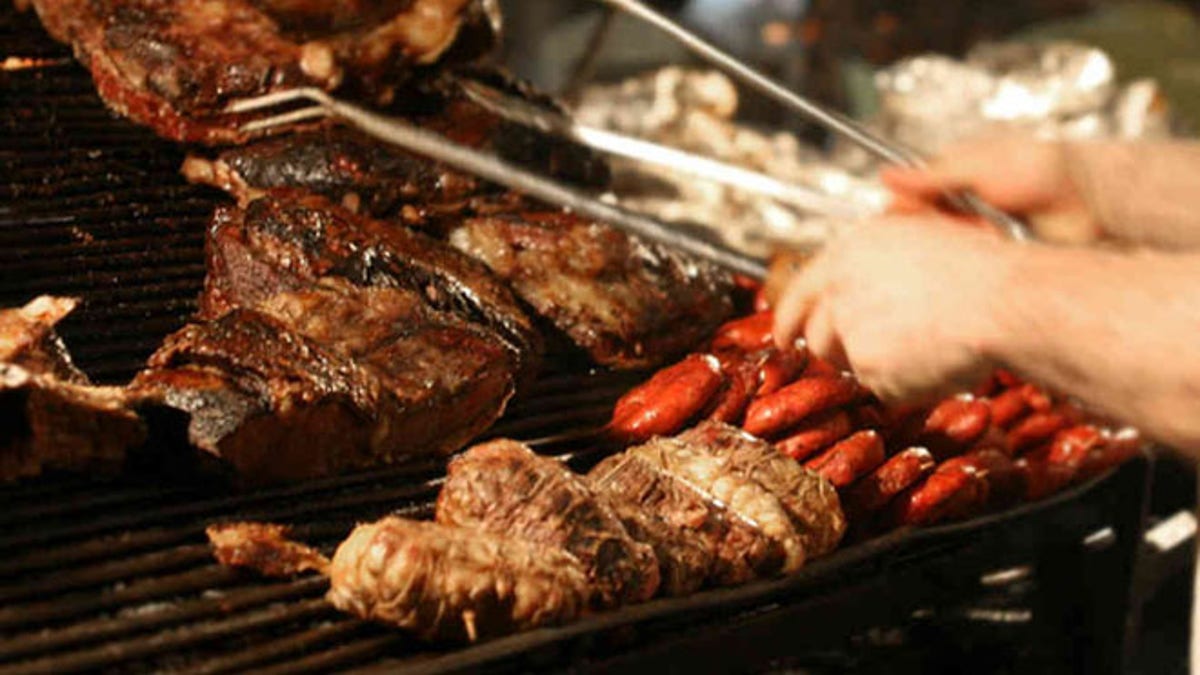
(iStock)
Is Certified Angus Beef better than USDA Choice meat? Is Prime Rib better than USDA Prime? It's confusing because some of these are grades of beef, some are cuts, while Angus is actually a breed of cattle. Read on to take the guesswork out of your next trip down the meat aisle.
Beef Grades
The U.S. Department of Agriculture (USDA) grades beef for quality and consistency, designating the meat with eight different grades. From highest to lowest, they are: Prime, Choice, Select, Standard, Commercial, Utility, Cutter and Canner. Most restaurants serve Prime or Choice beef, and only about two percent of all beef graded by the USDA qualifies for Prime distinction.
Another grading program is Certified Angus Beef, a designation awarded by the Wooster, Ohio-based Certified Angus Beef brand, which was created in 1978 in order to supply consumers with high-quality meat. Angus is a breed of cattle, so just because something is labeled "Angus" doesn't mean it has passed any sort of quality control. In order to earn the brand's logo, qualifying beef must pass eight specifications more than USDA Choice regarding marbling, tenderness and consistency of flavor. Tellingly, only one in four Angus in the U.S. qualify.
Beef Cuts
The tenderness of beef is largely determined by how much exercise the muscles receive; the more a muscle is used, the tougher it is. For instance, a cut from the rear (round) will naturally be tougher than a cut from the tenderloin region, which is located along the upper back. Here’s a quick crash course in bovine anatomy. Starting at the neck and working down the backbone, you have the chuck, then the rib, followed by the short loin and sirloin and ending with the round. The side section is the flank. Those areas produce the following steaks:
Chateaubriand: A piece of the tenderloin (the pointed end of the short loin), sized to feed two or more people and traditionally roasted.
Delmonico: A boneless cut from the rib section, named after the 19th century New York restaurant that popularized this dish.
Filet mignon: Think French! The name of this cut translates as tenderloin and it is the tapered, fork-tender end of the short loin.
Flank steak: A lean cut of meat taken from the underbelly that grills quickly. This cut often is used for fajitas.
Flatiron steak: Cut from the top blade, so named because it resembles a flatiron.
Hanger steak: Also called the hanging tenderloin, this cut is part of the diaphragm that hangs between the ribs and the loin.
London Broil: A large cut from the flank, often marinated to tenderize it, then broiled and served thinly sliced.
New York strip: A steak by many other names…(such as shell steak, Kansas City strip or sirloin club steak): The marbled, larger end of the short loin.
Porterhouse: Essentially the T-bone's big brother, combining two steaks in one, the New York and the filet.
Prime rib: The bone-in rib steak, cut from ribs six through twelve, that often contains a bit of gristle but is full of flavor.
Rib-eye: A rib steak without the bone; prized among steak lovers for its marbling and flavor.
Sirloin steak: Sitting between the short loin and the rump steak is the sirloin, less tender than the short loin but still full-flavored.
T-bone: Similar cut as the Porterhouse, only the filet side is usually a bit smaller. Named for the t-shaped bone running down the center of the steak.
Tri-tip: Also known as a culotte steak or triangle steak, the tri-tip is a triangular-shaped portion of top sirloin.
More from Gayot
Top 5 Tips for a Perfect Steak
